A movie like this sort of makes for bad blog fodder, as I quickly lose the ability to say anything smart and can only stutter and gawp: Those performances! That cinematography! All those fantastic faces! So no attempt at a thesis here---just a few observations, and perhaps we'll get The Belgian to chime in at the comments.
When I first saw McCabe in college, the professor talked about the classic Western narrative of the guy who built the town being unable to live in it. But actually, the film's even crueler than that: McCabe really doesn't build the town at all. He shows up, buys up some property, and starts a business, but the one thing he brings that wasn't there before---a classy brothel which serves as the movie's ironic symbol of civilization---wasn't his idea at all; he just put up the capital that Mrs. Miller put to work. Ultimately, McCabe is a good-time irrelevance---not only can he not adjust to civilized life, he's not much use on the frontier either. Fortunately for Altman, he's got the immense charisma of Warren Beatty on his side; otherwise it'd be awfully hard to pay attention to what's ultimately the story of a great nonentity.
McCabe's uselessness is further highlighted by Altman's trademark generosity with minor characters. In the background of McCabe's bull sessions and drunken card games, we get glimpses of the people who are doing the real building of the town, and it's striking how different all of them are from the palefaces who would be the heroes, rogues, and general moral centers of a previous era's Westerns.
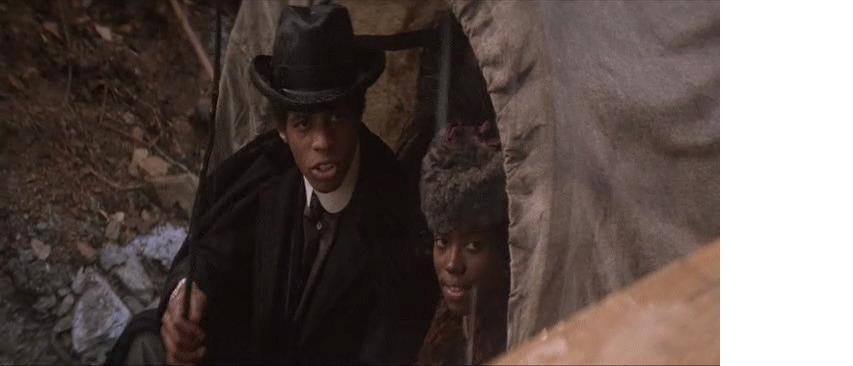 There's the Washingtons, a sedate African-American couple who mostly steer clear of the white folks' crazy fights. Instead, they do their jobs---they're the ones who actually bring in the ladies that are Mrs. Miller's capital---and keep their heads down. The most respectable citizens in town, they get the last "townspeople shot" in the movie, walking away from the celebration after the church fire has been put out; having done the work of preserving public order, they're visibly uninterested in the debauchery that keeps endangering it.
There's the Washingtons, a sedate African-American couple who mostly steer clear of the white folks' crazy fights. Instead, they do their jobs---they're the ones who actually bring in the ladies that are Mrs. Miller's capital---and keep their heads down. The most respectable citizens in town, they get the last "townspeople shot" in the movie, walking away from the celebration after the church fire has been put out; having done the work of preserving public order, they're visibly uninterested in the debauchery that keeps endangering it. 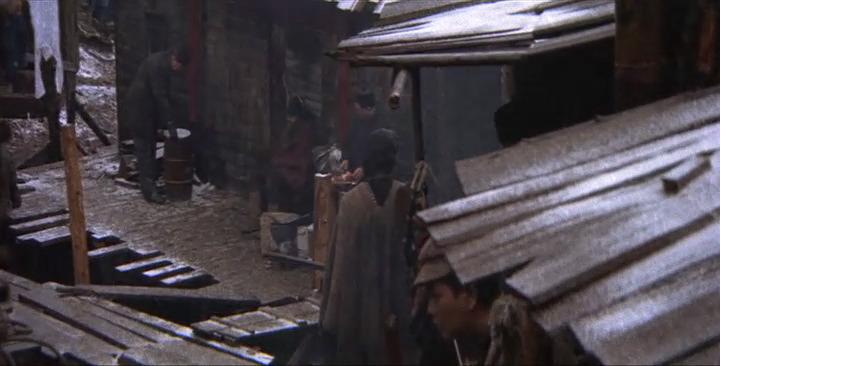 We only get a few glimpses into the Chinatown that's already taken root when the town's roads aren't even done, but they're terrifically suggestive, and the Chinese workers in Mrs. Miller's "gooseberry ranch" similarly remind the viewer who's actually building things in this outpost. I would love to see a whole feature Western set in one of these frontier Chinatowns, with the cowboys as the mysterious presence that keeps making trouble.
We only get a few glimpses into the Chinatown that's already taken root when the town's roads aren't even done, but they're terrifically suggestive, and the Chinese workers in Mrs. Miller's "gooseberry ranch" similarly remind the viewer who's actually building things in this outpost. I would love to see a whole feature Western set in one of these frontier Chinatowns, with the cowboys as the mysterious presence that keeps making trouble. Meanwhile, the one member of the white-boy brigade who does try to build something resembling a real life, Bart (played by Bert Remsen, Altman stalwart and favorite of my estwhile co-blogger) can't keep his drunken temper and overinflated sense of honor (which would be a mark of virtue in many guy-flicks) under control, and gets himself killed in one of the dumbest streetfights in movie history. As a result, his mail-order bride (Shelly Duvall! Those eyes! Those lips!) immediately makes a beeline for Mrs. Miller in the hopes of some more lucrative work, which is, as Mrs. Miller declares in no uncertain terms, a much better deal than being Bart's wife ever was.
All this abnegation is especially appropriate considering the general mood of alienation from America-building that must have prevailed on set. McCabe was shot in Canada in 1971, and a significant number of crew and performers were draft-dodgers who'd settled in the Canadian wilderness, and could hardly have resisted the joke of playing the original American cowboys creating a land that the counterculture was increasingly giving up on.
On a completely other note (I warned you there wasn't going to be a big thesis...): I do so love the sheer muzziness of the visuals, appropriate for a movie whose protagonist is slobbering drunk most of the time, and regularly caught in the rain. This is often exaggerated beyond all reason, as in McCabe's big entrance at the end of the credits sequence, when Altman and his cinematographer decided that all the "flashed" shots just weren't fuzzy enough, and shoot McCabe's entrance through a pane of dirty glass.
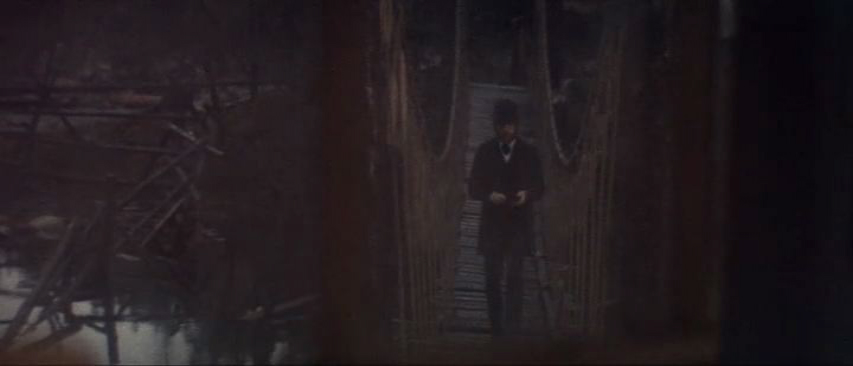
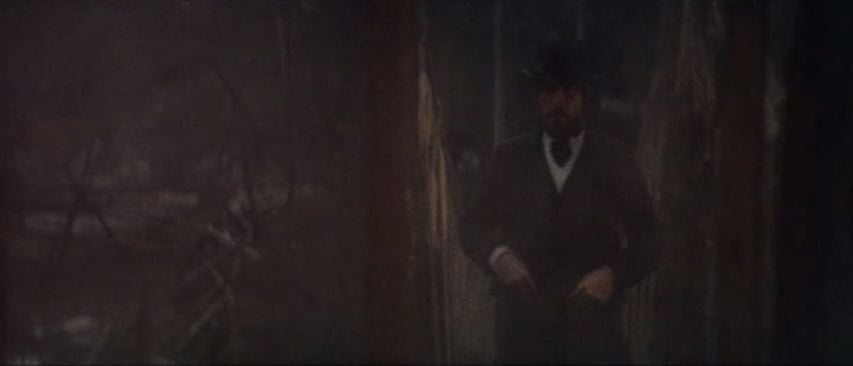
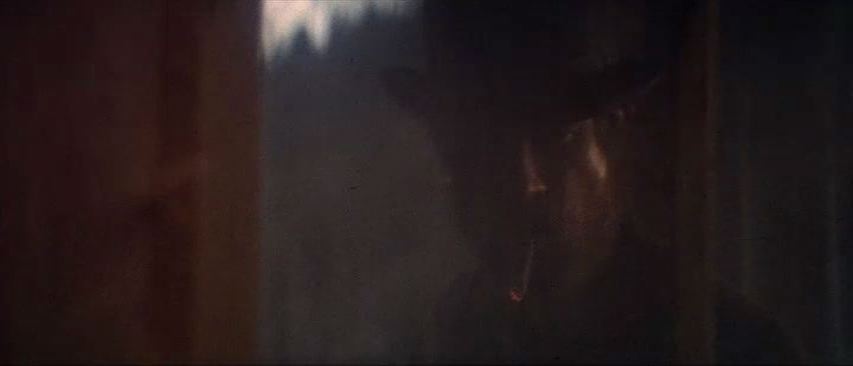
It's also interesting to note how much of the movie's visual progression is built around the introduction of color. The early scenes of the movie are a thousand shades of brown, with a look that subtley evokes sepia-toning. We then get black and white for the journey down to Bearpaw, with color mostly visible on ties and houses, symbols of civilization that seem out of place in the vast wilderness.
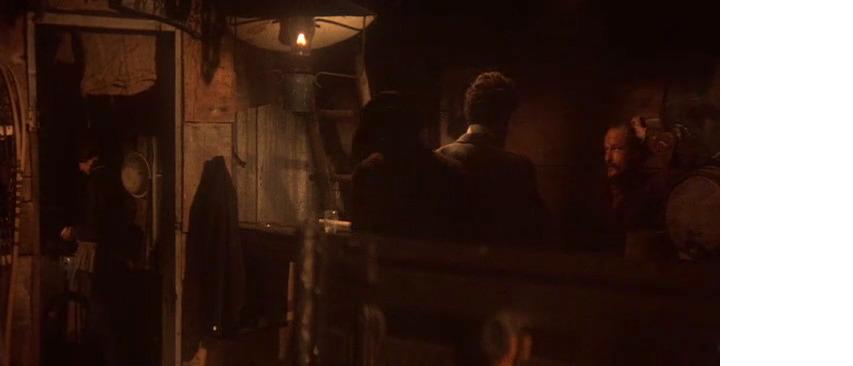
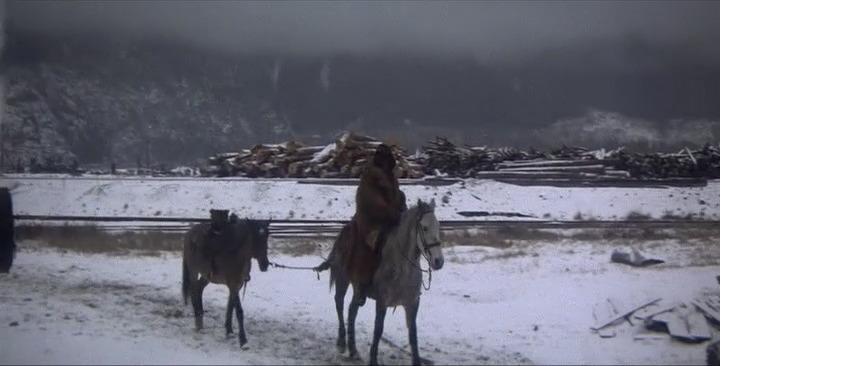
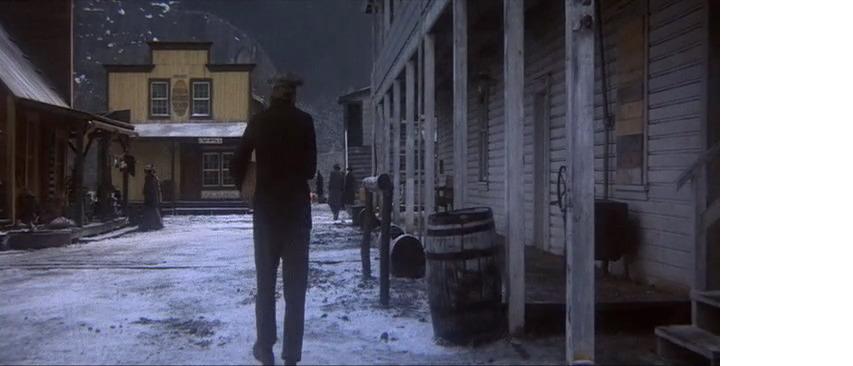
But once Mrs. Miller enters the picture, a whole new palette of colors opens up. Her high-class establishment, while still somewhat desaturated, has a much wider range of colors and tones than Sheehan's murky bar, in keeping with the wide range of possibilities it offers as its main enticement.

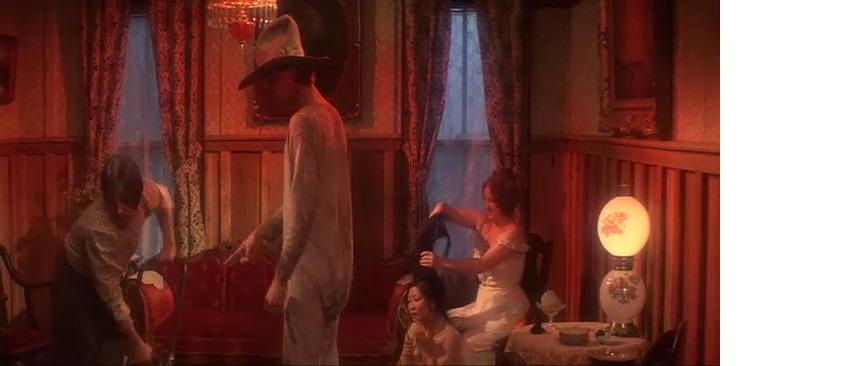
Similarly, the thugs from the mining company bring with them a bright, hard light, very different from the diffuse glow we saw earlier. This unsparing brightness, like being born into a world McCabe's been in hiding from, reaches its apotheosis in the final snowbound gunfight, where we return to a limited pallete, but this time with a light that's sharp, clear, and merciless.
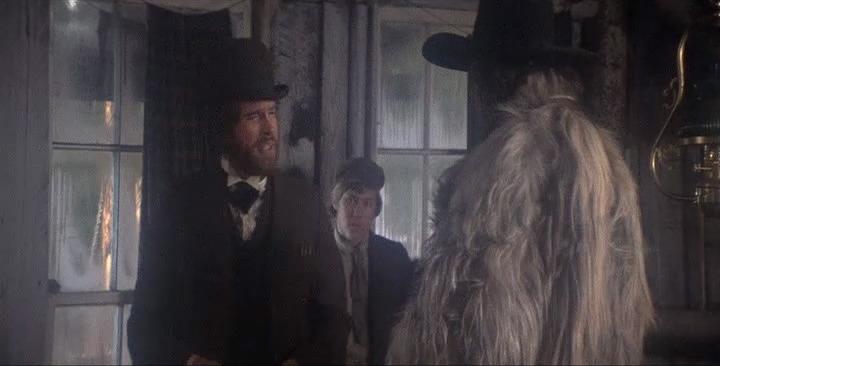
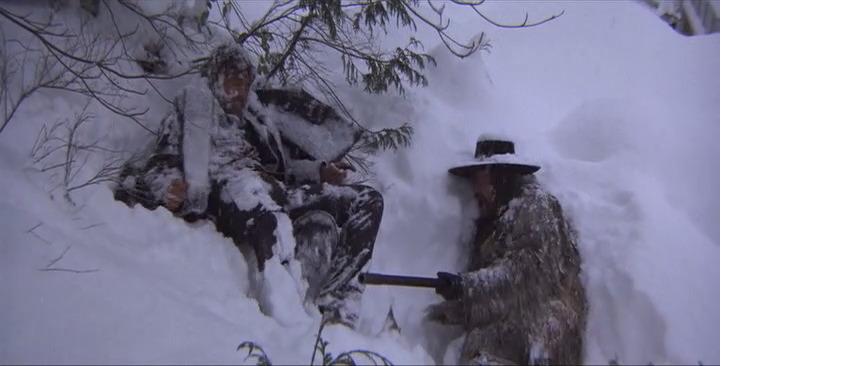
My final thought on McCabe: If it does nothing else, it really makes you realize how miserable it must have been to settle the Pacific Northwest. You're riding on horseback for days, living in shacks and tents, it's raining all the goddamn time! Unlike the majority of Westerns, which are set in the deserts of California, Arizona, and New Mexico, McCabe takes place is a world where nature is always asserting itself, not with spectacular flash-floods of disaster, but with a constant thudding of misery and muck.
2 comments:
Warren Beatty brings longjohns back.
I experience momentary flickers of irriation at Altman's penchant for zooms.
This is washed away completely by the indelible image of McCabe crumpled in the snow, a scene almost Japanese in its merciless, painterly desolation.
You know, the zooms don't really bug me. They look dated, yeah, but no more so than the lap dissolves and overlays in 40s movies. I actually wish the zoom wasn't considered out of style---it's an effect I quite like, and lord knows it's easier to do on set than a dolly in.
But yeah, that final snow death is amazing---I've often wondered if Kubrick (who did heavy McCabe research while getting ready to shoot Barry Lyndon) was influenced by it when ending The Shining. One thing that strikes me, too, is how parsimonious Altman is with big colors in the final shootout. It's an obvious opportunity to use Red Blood! White Snow! But even in an image like the trail of blood leading to the dead half-breed, the blood is mostly submerged in the snow. It's Altman's general refusal to gussy up, prettifty, or art-design at work, I think, and I do love him for it.
Post a Comment